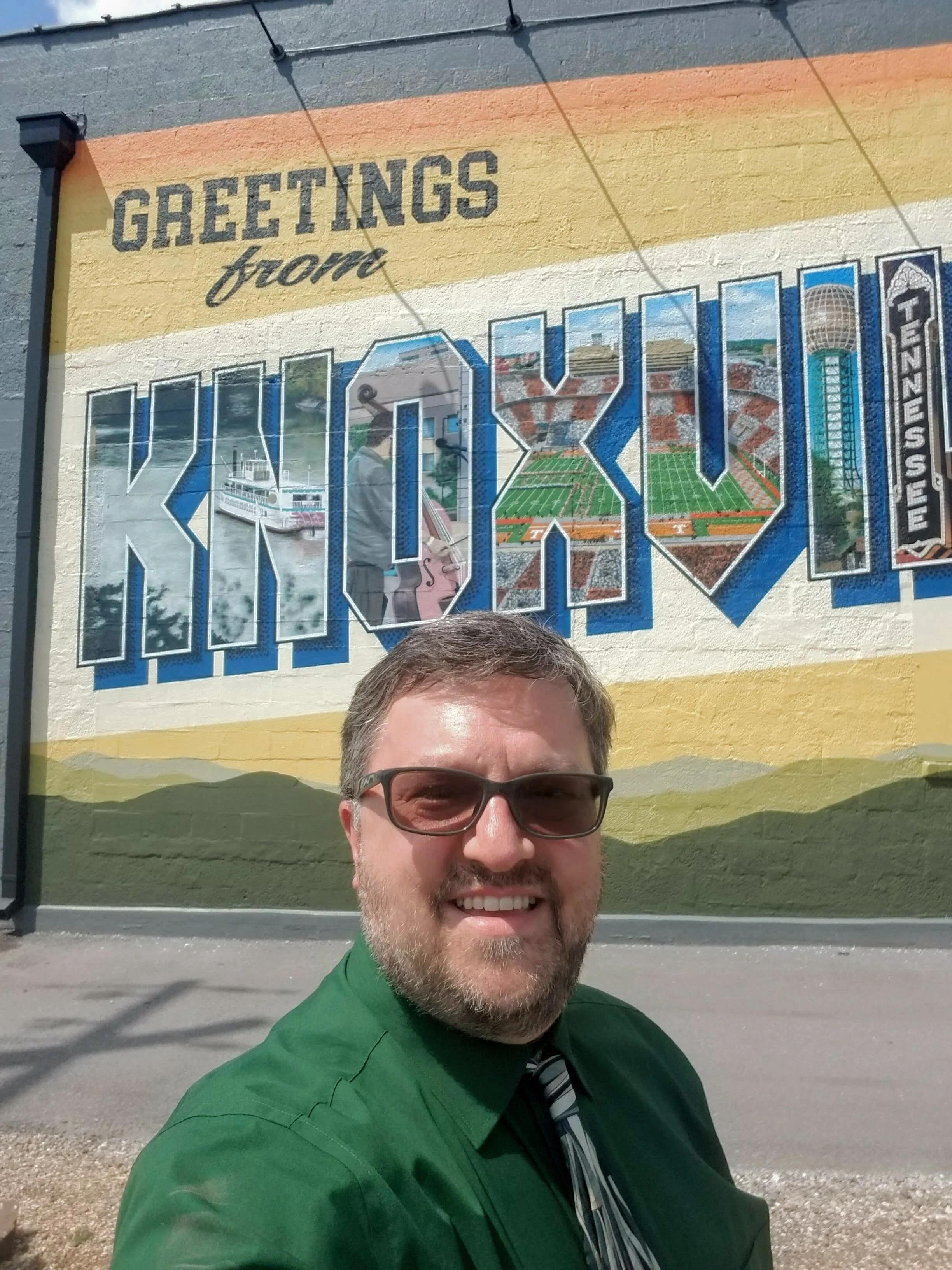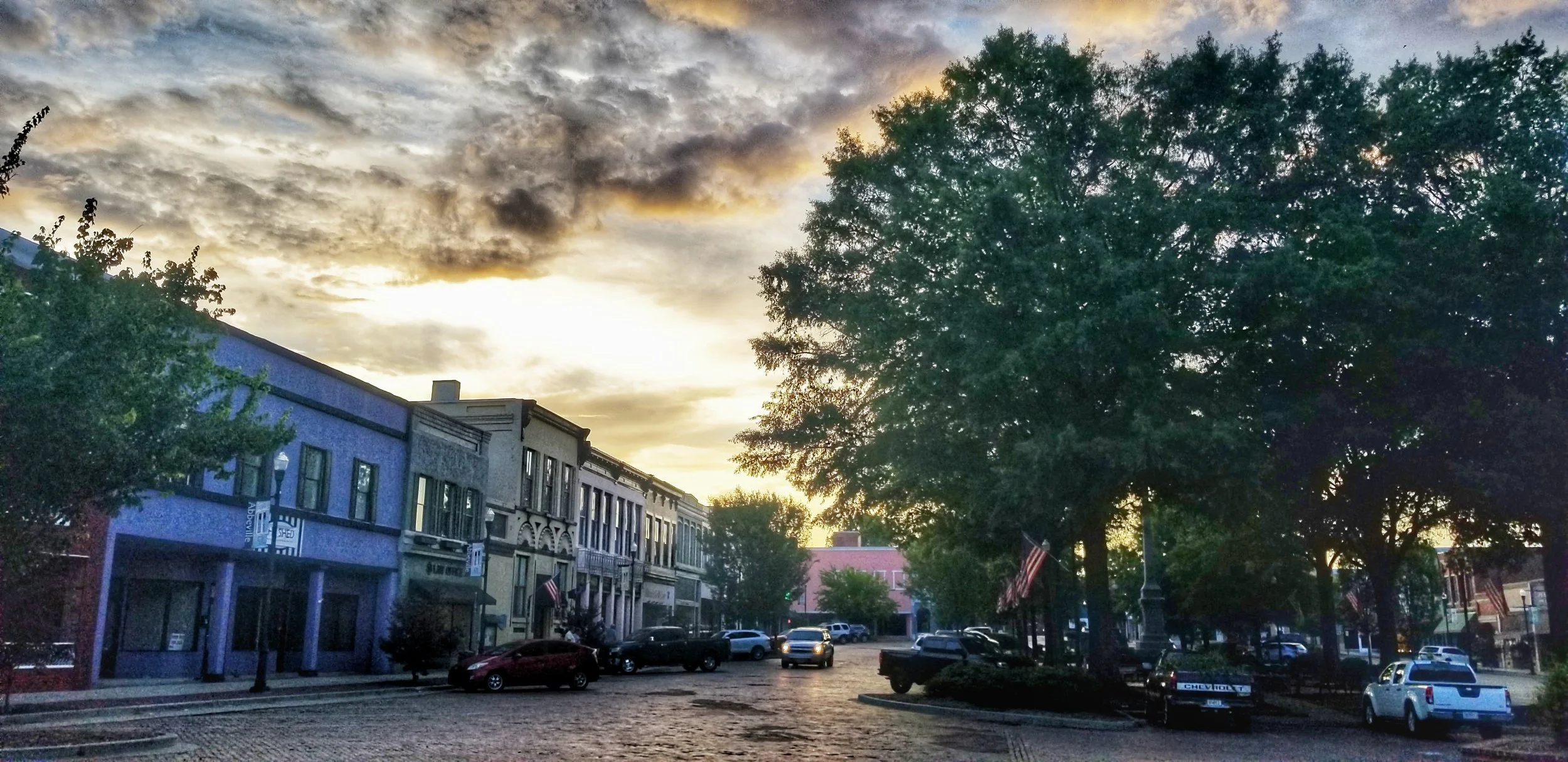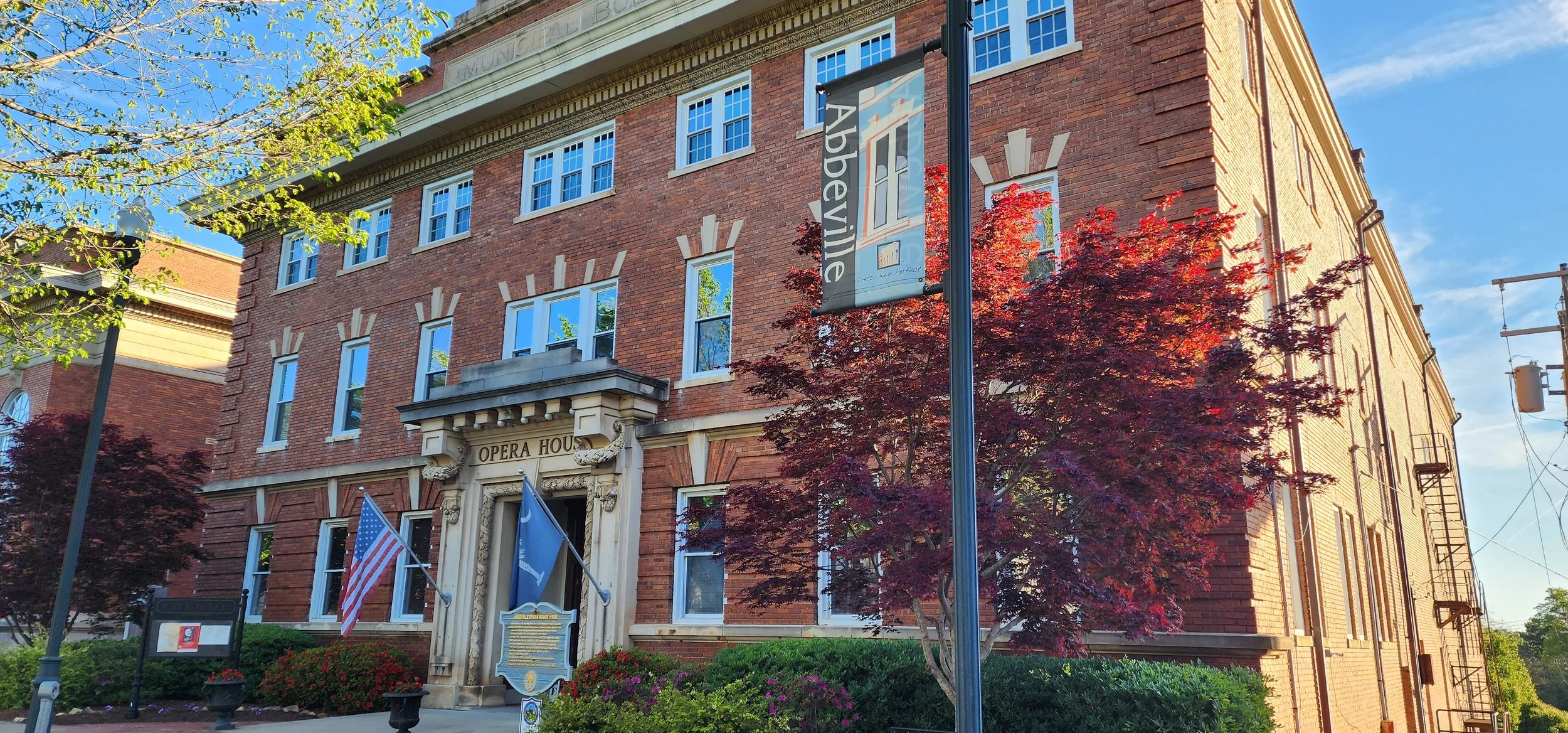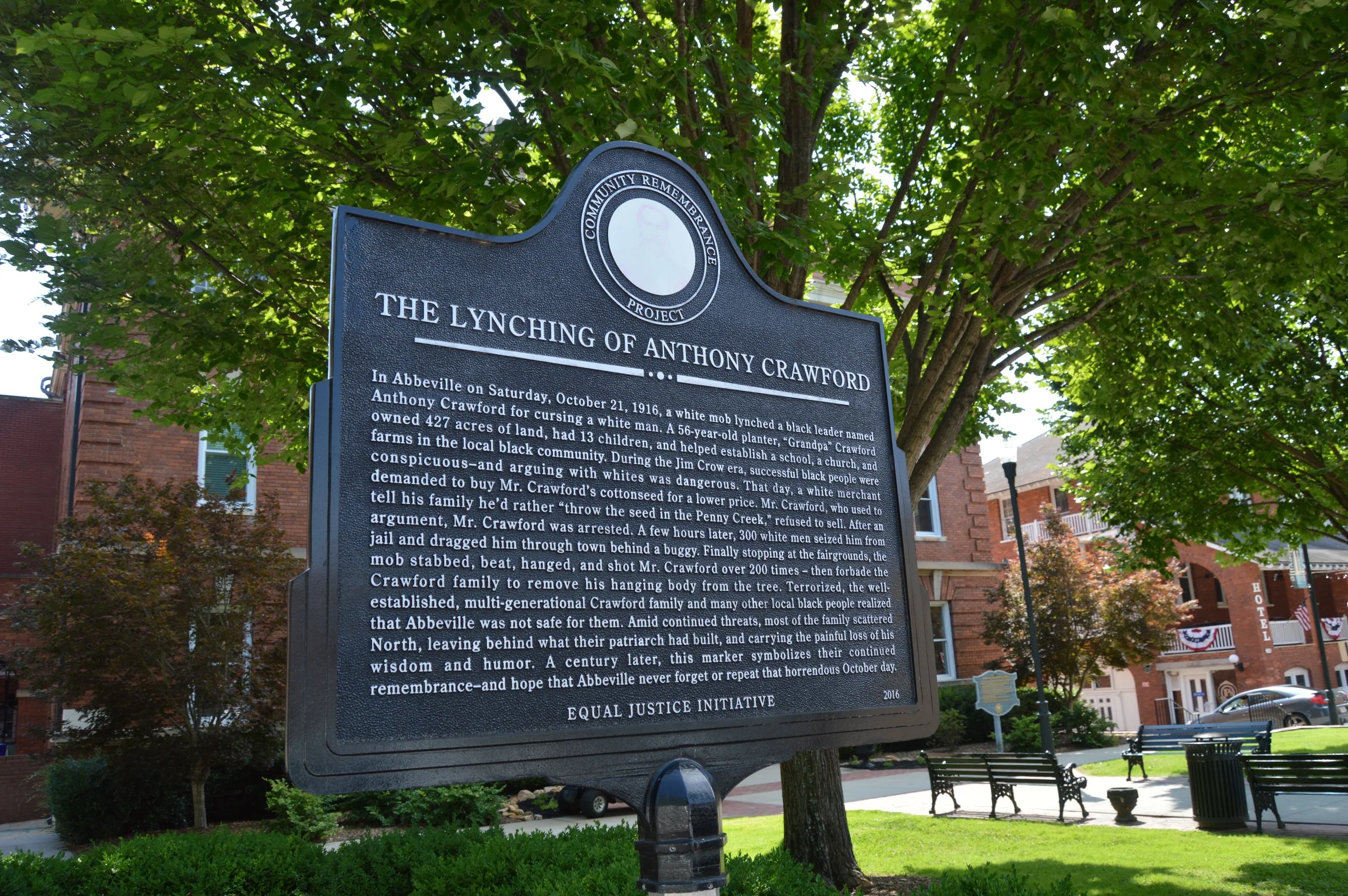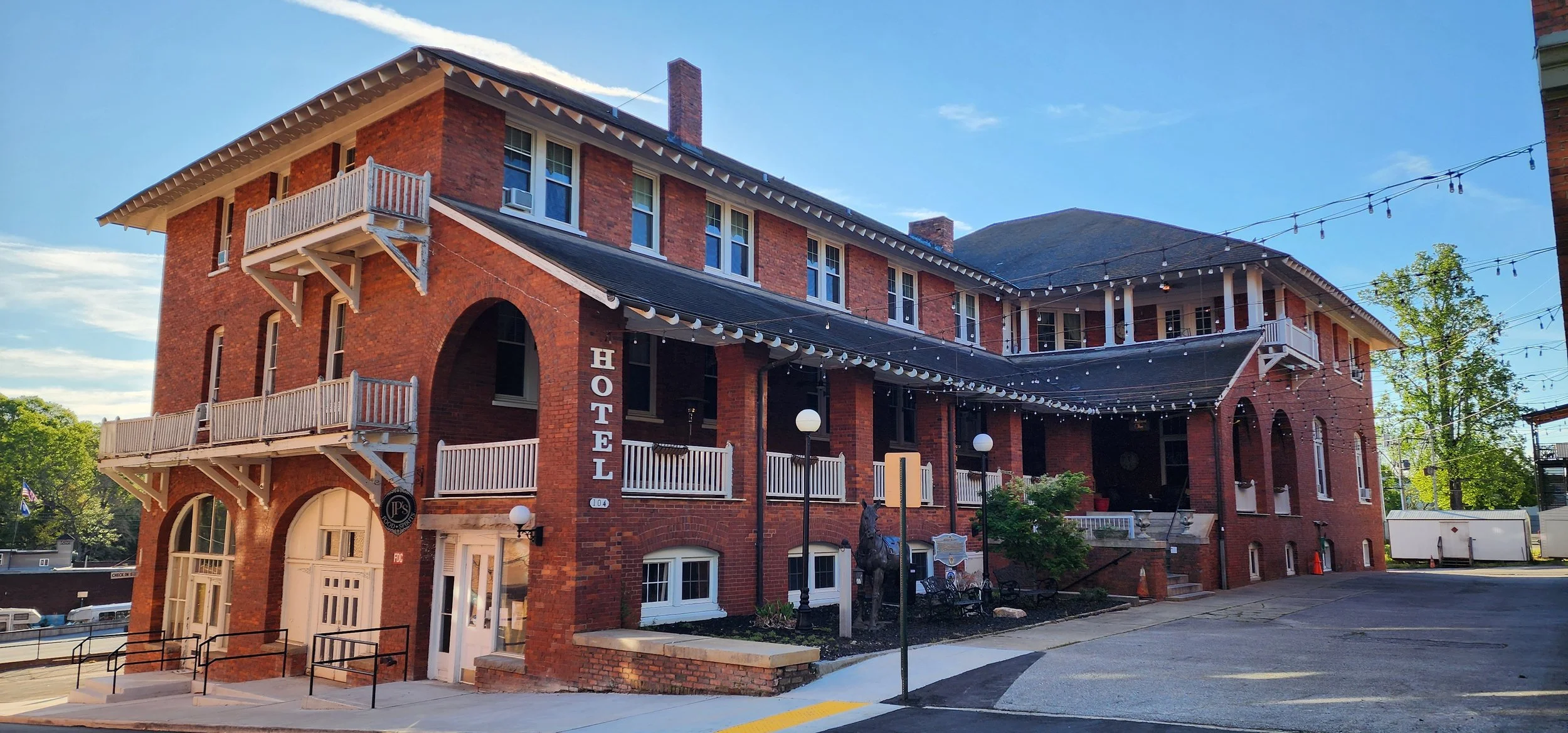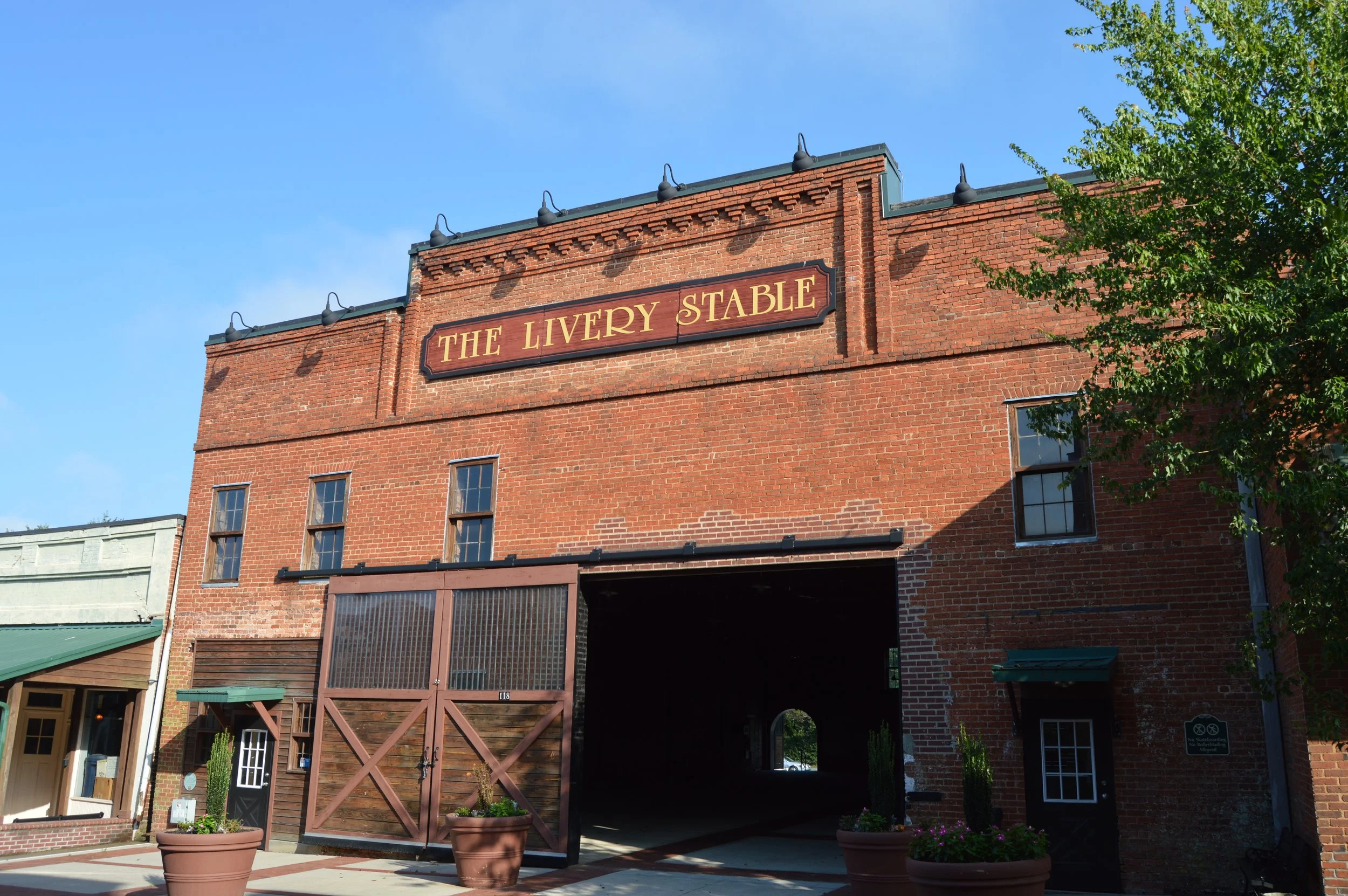Abbeville, SC: History around every corner
Brightly colored buildings all lined up in a row, brick streets all around the public square, an historic Opera House, and a towering church steeple rising above it all. With this picture in your head you might think it describes Charleston or Savannah or maybe even a city in Europe, but this is Abbeville, South Carolina a place where you’ll find history (and more) around every corner
*During my time in Abbeville I was a guest of Visit Old 96 Tourism. The opinions expressed in this post are my own.
Brightly colored buildings and brick streets surround a small park in the heart of Abbeville, South Carolina. The park is filled with monuments, memorials and even a special water fountain.
Trinity Episcopal Church
One of Abbeville’s most elegant landmarks lies at the end of narrow brick street on the west side of the square. Trinity Episcopal Church’s unmistakable gothic architecture was inspired by cathedrals in Europe, both inside and out, especially the spire that is more than 100 feet high. While the congregation dates back to the 1840’s the current church building was built just before the Civil War.
According to the Trinity Church website, the consecration for the building happened just two days before Abraham Lincoln was sworn in as President. That event, along with a vote that happened just a few blocks away, would alter the course of South Carolina (and American) history (read more about that vote further down in the post).
Trinity Episcopal Church was built just before the start of the Civil War. In recent years it has undergone massive renovations to stabilize and preserve the structure.
On my first couple of visits to Abbeville, I could only admire the beauty of this magnificent building from the outside. However, in July 2021, I finally got a tour of the inside. One of the first things I noticed was the collection of stained glass windows throughout the sanctuary. My tour guide explained the windows were the work of the William Gibson Studio, the “father of stained glass painting in America.” Another stand out feature is the John Baker “tracker” pipe organ, one of only two in South Carolina.
Time has taken a toll on Trinity Church. The steeple’s deterioration forced a closure to visitors, but the congregation kept meeting in the Parish Hall behind the church. Restoration efforts have now stabilized the structure, but more work needs to be done. To learn about this preservation project or learn how you can help keep it going visit restoretrinity.org.
Abbeville Opera House
Decades before people flocked to the silver screen for entertainment, people flocked to places like the Abbeville Opera House to catch a show. Road Companies going from New York to Atlanta would stop in this small South Carolina town for an overnight stop. As a result, the Opera House was able to host shows ranging from Shakespeare and Operas to legendary entertainers like Jimmy Durante and the Ziegfeld follies. William Jennings Bryan is said to have spoken from the stage, too during one of his runs for President.
Thousands of people still come to the Abbeville Opera House each year to see live entertainment At the time this picture was taken, seating on the lower level was being replaced.
Thanks to restoration efforts this stately, three-story brick building continues to be a place for live theater and entertainment. Like many other grand theaters like it, the Abbevville Opera House boasts beautiful, boxed seating adjacent to the stage. Just recently the seating on the lower level was replaced. The seats on the upper balcony are the original ones from when the Opera House opened in 1908, but aren’t used today.
Hemphouses got their name from the hemp rope used in the theaters rigging ropes which were put over pulleys and tied to sandbags. (AmericanTheater.org)
The magic on the stage isn’t just relegated to the people in the spotlight. Behind the stage, an elaborate system of ropes, pulleys and bags keeps the magic going. The system has been in use since 1908 and according to discoversouthcarolina.org, the Opera House is the only “Hemphouse” remaining in the Palmetto State. Including this historic treasure in a trip to Abbeville is a must, whether it’s to see a show or just take a tour.
An historic beginning and end in Abbeville
The battle at Fort Sumter ushered in America’s Civil War, but something that happened in Abbeville a few months earlier helped lay the groundwork for what happened in Charleston. After Lincoln’s election as President of the United States, a group of people met on a hill in Abbeville to launch efforts for South Carolina to secede from the Union. An historical marker at the site says, Judge A.G. Magrath of Charleston, urged “immediate action on the part of South Carolina at any & every hazard.” It is here on “Secession Hill” that the Confederacy was born.
Just one month after a meeting in Abbeville, South Carolina became the first state to secede from the Union.
Historic homes abound throughout Abbeville, but a large home where Main and Greenville Streets come together is perhaps the town’s most famous one. The Burt-Stark Mansion’s Greek Revival architecture, wrought iron fencing, and large lawn make it stand out from the rest. But it’s what happened here in May of 1865 that cemented its place in history.
In 1865, Confederate President Jefferson Davis met with his war council inside this elegant mansion in Abbeville. That meeting effectively ended the Confederacy.
After fleeing from Union Troops in Richmond, Confederate President Jefferson Davis made his way to Abbeville where he and his War Council officially dissolved the Confederate Army during a meeting at the Burt-Stark Mansion. The home is generally open for tours a couple of days a week. Just check out burtstark.com for more information.
More history on Main Street and beyond
Whether it’s a City Hall or a Courthouse, government buildings often help define or add character to a town. In Abbeville, the County Courthouse stands beside the grand Opera House on the Square. The Beaux Arts style building is the 5th Courthouse for Abbeville.
While you’ll find historical markers at many of the prominent homes and buildings in Abbeville, you’ll also find markers like this one, outlining one of the darker moments in the town’s history.
The colorful buildings surrounding the square in Abbeville remind me of places like Rainbow Row in Charleston. One of the oldest was built around 1865 as the first Bank of South Carolina, ceasing to be a bank in the late 1990s. Inside the building, which serves as a Visitors Center, you will find large paintings along the walls depicting 100 years of the city’s history.
The Belmont Inn has 25 guest rooms, a restaurant and a bar. It’s location on the Abbeville Square makes it easy to walk to the shops, Opera House and other attractions.
History surrounds guests at the Belmont Inn, whether they are staying overnight, having dinner. or are there for a special event. Built in 1903, the hotel has welcomed a wide variety of guests. According to the Inn’s website those guests have included people in the railroad and textile industries, road-show performers, President Jimmy Carter and actress Kelly McGillis. Throughout the decades, the Belmont has seen many changes in ownership. During my last visit, the Inn had new owners and were working on the hotel’s next chapter.
Several months of the year you can check out the Farmer’s Market inside The Livery Stable on Trinity Street. At other times, the space is used for special events.
On one corner of the square the name “D. Poliakoff” is spelled out on the top of the building and on a mural on the side of it. While the store bearing the name has been gone for more than two decades, D. Poliakoff Department Store operated in Abbeville for 100 years. An article on the Jewish Merchant Project website, tells a much more detailed account of the store’s founder, an immigrant from Russia. Today, the markings left on the building serve as a reminder of Abbeville’s rich retail history. Around town you’ll find plenty of specialty stores, boutiques and restaurants.
Divine Your Space in Abbeville, SC offers home and garden decor as well as a space to sip wine and unleash your creativity.
Sharon Manor B&B
When you walk into Sharon Manor Bed & Breakfast, you might not realize you are stepping into what used to be a school auditorium. Sunlight fills the wide-open space where large white columns stretch from the dark wooden floors to the ceiling. The area serves as a place to sit, meet and at breakfast it’s where you get a meal that’s as elegant (and colorful) as the room that surrounds you .
You had me at bacon! Guests at the Sharon Manor B&B won’t leave hungry.
Although the building dates back to the 1920’s it has a thoroughly modern feel and the guest rooms will never leave you feeling like you’ve fallen asleep in class. Sharon Manor was definitely unique when it comes to places to stay overnight. The owners also roast their own coffee and try to source as many local products as they can for the meals.
Spending the night in an old schoolhouse was never like this. Sharon Manor offers guests cozy accommodations and one of the best breakfasts in the area.
Losing yourself in history and charm
Anytime you visit Abbeville it’s easy to find yourself getting “lost” in history and charm. On each visit I’ve managed to find something “new” in a town that was first settled in 1758 by French Huguenots. Of course I also find myself revisiting familiar spots like Breezy Quarters, where owner Paige Bowser churns out a wide variety of bath and body care items all while showing her passion for Abbeville and all it has to offer. It’s also a must to grab a hot dog at the Rough House, one of the best in all my travels or check out restaurants like ReFuel or Indigenous Underground.
Check out my previous posts about Abbeville and other Treasures in the Old 96.
